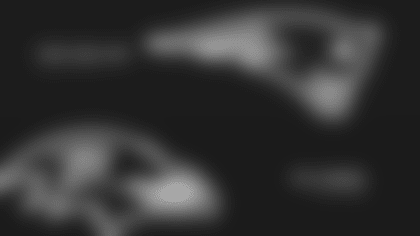In the NFL, distance matters.
In Super Bowl 49, three feet was the distance between the Seattle Seahawks and the end zone and for the Lombardi Trophy.

It's also the distance between Bose headsets worn by coaches and their belt packs. The sets are used to communicate with other coaches on the sideline and others seated in two small boxes above the top deck of most NFL stadiums.
One yard can make all the difference when coaches are trying to communicate – and be heard clearly – when home or away and screaming fans can raise noise to over 100 decibels, probably about the same level as the very first row in a rock concert.
That's why the NFL moved from traditional headphones to Bose-created advanced sets before the beginning of the 2014 season. The sets employ the firm's active noise cancelling technology, which reduces extra loud outside noise to a low murmur.
When it's crunch time, whether you're in a combat helicopter, piloting a commercial airliner or a coaching a NFL team in a hostile outdoor stadium in December, clarity in communications is king. You need much more than to hear yourself think.
All league coaches and the so-called "yellow hats" along the sidelines that set up communications for teams before each game (and cover other IT requirements) are already 'on to year two' with the advanced tech headsets.
But how did they get here?

First Things First
Before partnering with the league, Bose set out to learn and address the requirements and challenges of the NFL environment. Even basic communication has not been a given in this often unforgiving workplace.
Remember when TV game hosts would announce that one team lost its communications so the other team had to shut their down to maintain an even playing field? Thankfully it has been some time since. Thanks sideline technology improvements and additions for this.
Bose worked with yellow hats as the company evolved its noise-cancelling headsets for their NFL debut.
To ensure continuous communication regardless of the playing environment Bose weatherproofed the sets, which included covering the mikes with material to make them immune to water, snow, cold, heat and spike-caused failures, according to Sean Garrett, vice president of the Bose Noise Reduction Technology Group.
The belt packs that come with the headphones communicate wirelessly with a sideline system the size of a street construction-size generator which also sports an antenna. They also play a role in support coach-to-player communications, which are cut off after the play clock hits 25 seconds. There is one such unit on each sideline near midfield at last Thursday night's Patriots-Packers preseason game.

Then and Now
Dante Scarnecchia knows a little bit about live game communications challenges.
The Patriots legend logged 30 years with the Patriots starting as a special teams coach with the team and retiring as assistant head coach before last season. He survived the days of wired communications where he said 46 coaches and staff would walk along the sidelines many with corded headsets "created chaos."
Deafening crowd noise and big bass made things much worse. Scarnecchia retired before the Bose noise-cancelling headphones came to the NFL, but marvels at an improvement just the same. "I heard it and thought how much easier is this?" he smiled. The former coach recalls games where challenges included "being able to hear your voice without making yourself deaf in the process." By the end of the game, in part because of coaching players during the game, he would sometimes become close to hoarse.

How Noise Cancelling Works
After many years of research dating back to the founder's efforts, Bose introduced noise cancelling technology in 2000. Since them, the tech pioneer has found homes for headphones that use it in the military, aviation, and in 2014, the NFL.
The technology first measures and identifies unwanted sounds, and then calculates and produces an equal and opposite signal -- thousands of times per second, according to a Bose description. "Rumbling stadium noise -- which can reach 130 decibels -- is dramatically reduced, and communication becomes clear and audible."
Bose adapted its two ear cup headsets for the NFL to meet the needs of some coaches that preferred a single ear cup. The headphones for the NFL feature what the company calls a control module that is home to the set's power management circuitry.

Fine Tuning
The yellow hats don't all sit idle after a game begins. Dan Famosi, the Patriots' IT specialist and top hat-wearer, explained that some with the Bose headsets speak louder than others, a situation that once identified can be easily addressed by turning down their mikes. This was not as easy in the past as the system featured a general setting.
After viewing activity on the sideline last Thursday, it's clear that yellow hats don't stray from the communications control system and Microsoft communications system during the game.
Party Line, Private Line
NFL teams, with their yellow hats, create the communications matrix they feel is best for game day. Instead of relying solely on a party-line approach that enables many or everyone to speak and listen, some add a private channel capability between two people. It could be used for a coach in the booth above the stadium to tell a sideliner to challenge and on-the-field play or for a sideliner to ask a coach in the booth where an opposing player(s) came from.
The Bottom Line
There are many moving pieces that go into live game interaction – tasks that occur before, during and after the on-field action starts. Coaches talk with other coaches, staff and players throughout the matches. The complexity of this matrix alone provides a challenge for the yellow hats.
Technology advancements and new products have changed the look of the sideline in a few short years. If silence is golden, clear and reliable communication between headsets during games is priceless. Blocking out stadium noise, whether a team is on D at home or on O at an away game, improves a core element of the game, without changing the game itself.
Stay tuned.
Bob Wallace is a technology journalist with over 30 years of experience explaining how new services, apps, consumer electronic devices and video sources are reshaping the world of communications as we know it. Wallace has specific expertise in explaining how and why advances in technology, media and entertainment redefine the way football fans interact with the league, teams, players and each other. He's the Founder of Fast Forward Thinking LLC.
































